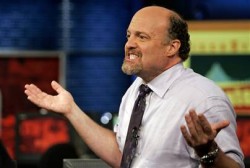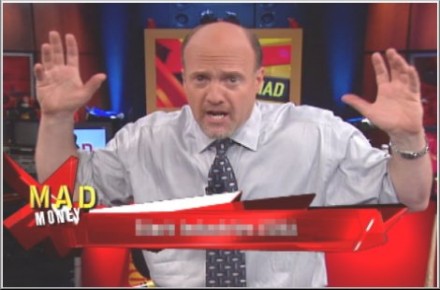 What would happen if the Federal Reserve was shut down permanently? That is a question that CNBC asked recently, but unfortunately most Americans don’t really think about the Fed much. Most Americans are content with believing that the Federal Reserve is just another stuffy government agency that sets our interest rates and that is watching out for the best interests of the American people. But that is not the case at all. The truth is that the Federal Reserve is a private banking cartel that has been designed to systematically destroy the value of our currency, drain the wealth of the American public and enslave the federal government to perpetually expanding debt. During this election year, the economy is the number one issue that voters are concerned about. But instead of endlessly blaming both political parties, the truth is that most of the blame should be placed at the feet of the Federal Reserve. The Federal Reserve has more power over the performance of the U.S. economy than anyone else does. The Federal Reserve controls the money supply, the Federal Reserve sets the interest rates and the Federal Reserve hands out bailouts to the big banks that absolutely dwarf anything that Congress ever did. If the American people are ever going to learn what is really going on with our economy, then it is absolutely imperative that they get educated about the Federal Reserve.
What would happen if the Federal Reserve was shut down permanently? That is a question that CNBC asked recently, but unfortunately most Americans don’t really think about the Fed much. Most Americans are content with believing that the Federal Reserve is just another stuffy government agency that sets our interest rates and that is watching out for the best interests of the American people. But that is not the case at all. The truth is that the Federal Reserve is a private banking cartel that has been designed to systematically destroy the value of our currency, drain the wealth of the American public and enslave the federal government to perpetually expanding debt. During this election year, the economy is the number one issue that voters are concerned about. But instead of endlessly blaming both political parties, the truth is that most of the blame should be placed at the feet of the Federal Reserve. The Federal Reserve has more power over the performance of the U.S. economy than anyone else does. The Federal Reserve controls the money supply, the Federal Reserve sets the interest rates and the Federal Reserve hands out bailouts to the big banks that absolutely dwarf anything that Congress ever did. If the American people are ever going to learn what is really going on with our economy, then it is absolutely imperative that they get educated about the Federal Reserve.
The following are 10 things that every American should know about the Federal Reserve….
#1 The Federal Reserve System Is A Privately Owned Banking Cartel
The Federal Reserve is not a government agency.
The truth is that it is a privately owned central bank. It is owned by the banks that are members of the Federal Reserve system. We do not know how much of the system each bank owns, because that has never been disclosed to the American people.
The Federal Reserve openly admits that it is privately owned. When it was defending itself against a Bloomberg request for information under the Freedom of Information Act, the Federal Reserve stated unequivocally in court that it was “not an agency” of the federal government and therefore not subject to the Freedom of Information Act.
In fact, if you want to find out that the Federal Reserve system is owned by the member banks, all you have to do is go to the Federal Reserve website….
The twelve regional Federal Reserve Banks, which were established by Congress as the operating arms of the nation’s central banking system, are organized much like private corporations–possibly leading to some confusion about “ownership.” For example, the Reserve Banks issue shares of stock to member banks. However, owning Reserve Bank stock is quite different from owning stock in a private company. The Reserve Banks are not operated for profit, and ownership of a certain amount of stock is, by law, a condition of membership in the System. The stock may not be sold, traded, or pledged as security for a loan; dividends are, by law, 6 percent per year.
Foreign governments and foreign banks do own significant ownership interests in the member banks that own the Federal Reserve system. So it would be accurate to say that the Federal Reserve is partially foreign-owned.
But until the exact ownership shares of the Federal Reserve are revealed, we will never know to what extent the Fed is foreign-owned.
#2 The Federal Reserve System Is A Perpetual Debt Machine
As long as the Federal Reserve System exists, U.S. government debt will continue to go up and up and up.
This runs contrary to the conventional wisdom that Democrats and Republicans would have us believe, but unfortunately it is true.
The way our system works, whenever more money is created more debt is created as well.
For example, whenever the U.S. government wants to spend more money than it takes in (which happens constantly), it has to go ask the Federal Reserve for it. The federal government gives U.S. Treasury bonds to the Federal Reserve, and the Federal Reserve gives the U.S. government “Federal Reserve Notes” in return. Usually this is just done electronically.
So where does the Federal Reserve get the Federal Reserve Notes?
It just creates them out of thin air.
Wouldn’t you like to be able to create money out of thin air?
Instead of issuing money directly, the U.S. government lets the Federal Reserve create it out of thin air and then the U.S. government borrows it.
Talk about stupid.
When this new debt is created, the amount of interest that the U.S. government will eventually pay on that debt is not also created.
So where will that money come from?
Well, eventually the U.S. government will have to go back to the Federal Reserve to get even more money to finance the ever expanding debt that it has gotten itself trapped into.
It is a debt spiral that is designed to go on perpetually.
You see, the reality is that the money supply is designed to constantly expand under the Federal Reserve system. That is why we have all become accustomed to thinking of inflation as “normal”.
So what does the Federal Reserve do with the U.S. Treasury bonds that it gets from the U.S. government?
Well, it sells them off to others. There are lots of people out there that have made a ton of money by holding U.S. government debt.
In fiscal 2011, the U.S. government paid out 454 billion dollars just in interest on the national debt.
That is 454 billion dollars that was taken out of our pockets and put into the pockets of wealthy individuals and foreign governments around the globe.
The truth is that our current debt-based monetary system was designed by greedy bankers that wanted to make enormous profits by using the Federal Reserve as a tool to create money out of thin air and lend it to the U.S. government at interest.
And that plan is working quite well.
Most Americans today don’t understand how any of this works, but many prominent Americans in the past did understand it.
For example, Thomas Edison was once quoted in the New York Times as saying the following….
That is to say, under the old way any time we wish to add to the national wealth we are compelled to add to the national debt.
Now, that is what Henry Ford wants to prevent. He thinks it is stupid, and so do I, that for the loan of $30,000,000 of their own money the people of the United States should be compelled to pay $66,000,000 — that is what it amounts to, with interest. People who will not turn a shovelful of dirt nor contribute a pound of material will collect more money from the United States than will the people who supply the material and do the work. That is the terrible thing about interest. In all our great bond issues the interest is always greater than the principal. All of the great public works cost more than twice the actual cost, on that account. Under the present system of doing business we simply add 120 to 150 per cent, to the stated cost.
But here is the point: If our nation can issue a dollar bond, it can issue a dollar bill. The element that makes the bond good makes the bill good.
We should have listened to men like Edison and Ford.
But we didn’t.
And so we pay the price.
On July 1, 1914 (a few months after the Fed was created) the U.S. national debt was 2.9 billion dollars.
Today, it is more than more than 5000 times larger.
Yes, the perpetual debt machine is working quite well, and most Americans do not even realize what is happening.
#3 The Federal Reserve Has Destroyed More Than 96% Of The Value Of The U.S. Dollar
Did you know that the U.S. dollar has lost 96.2 percent of its value since 1900? Of course almost all of that decline has happened since the Federal Reserve was created in 1913.
Because the money supply is designed to expand constantly, it is guaranteed that all of our dollars will constantly lose value.
Inflation is a “hidden tax” that continually robs us all of our wealth. The Federal Reserve always says that it is “committed” to controlling inflation, but that never seems to work out so well.
And current Federal Reserve Chairman Ben Bernanke says that it is actually a good thing to have a little bit of inflation. He plans to try to keep the inflation rate at about 2 percent in the coming years.
So what is so bad about 2 percent? That doesn’t sound so bad, does it?
Well, just consider the following excerpt from a recent Forbes article….
The Federal Reserve Open Market Committee (FOMC) has made it official: After its latest two day meeting, it announced its goal to devalue the dollar by 33% over the next 20 years. The debauch of the dollar will be even greater if the Fed exceeds its goal of a 2 percent per year increase in the price level.
#4 The Federal Reserve Can Bail Out Whoever It Wants To With No Accountability
The American people got so upset about the bailouts that Congress gave to the Wall Street banks and to the big automakers, but did you know that the biggest bailouts of all were given out by the Federal Reserve?
Thanks to a very limited audit of the Federal Reserve that Congress approved a while back, we learned that the Fed made trillions of dollars in secret bailout loans to the big Wall Street banks during the last financial crisis. They even secretly loaned out hundreds of billions of dollars to foreign banks.
According to the results of the limited Fed audit mentioned above, a total of $16.1 trillion in secret loans were made by the Federal Reserve between December 1, 2007 and July 21, 2010.
The following is a list of loan recipients that was taken directly from page 131 of the audit report….
Citigroup – $2.513 trillion
Morgan Stanley – $2.041 trillion
Merrill Lynch – $1.949 trillion
Bank of America – $1.344 trillion
Barclays PLC – $868 billion
Bear Sterns – $853 billion
Goldman Sachs – $814 billion
Royal Bank of Scotland – $541 billion
JP Morgan Chase – $391 billion
Deutsche Bank – $354 billion
UBS – $287 billion
Credit Suisse – $262 billion
Lehman Brothers – $183 billion
Bank of Scotland – $181 billion
BNP Paribas – $175 billion
Wells Fargo – $159 billion
Dexia – $159 billion
Wachovia – $142 billion
Dresdner Bank – $135 billion
Societe Generale – $124 billion
“All Other Borrowers” – $2.639 trillion
So why haven’t we heard more about this?
This is scandalous.
In addition, it turns out that the Fed paid enormous sums of money to the big Wall Street banks to help “administer” these nearly interest-free loans….
Not only did the Federal Reserve give 16.1 trillion dollars in nearly interest-free loans to the “too big to fail” banks, the Fed also paid them over 600 million dollars to help run the emergency lending program. According to the GAO, the Federal Reserve shelled out an astounding $659.4 million in “fees” to the very financial institutions which caused the financial crisis in the first place.
Does reading that make you angry?
It should.
#5 The Federal Reserve Is Paying Banks Not To Lend Money
Did you know that the Federal Reserve is actually paying banks not to make loans?
It is true.
Section 128 of the Emergency Economic Stabilization Act of 2008 allows the Federal Reserve to pay interest on “excess reserves” that U.S. banks park at the Fed.
So the banks can just send their cash to the Fed and watch the money come rolling in risk-free.
So are many banks taking advantage of this?
You tell me. Just check out the chart below. The amount of “excess reserves” parked at the Fed has gone from nearly nothing to about 1.5 trillion dollars since 2008….
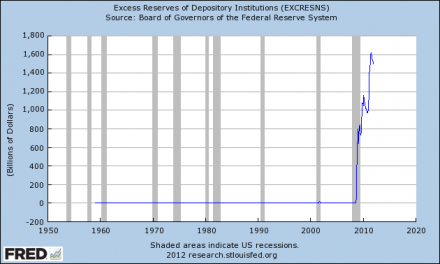
But shouldn’t the banks be lending the money to us so that we can start businesses and buy homes?
You would think that is how it is supposed to work.
Unfortunately, the Federal Reserve is not working for us.
The Federal Reserve is working for the big banks.
Sadly, most Americans have no idea what is going on.
Another example of this is the government debt carry trade.
Here is how it works. The Federal Reserve lends gigantic piles of nearly interest-free cash to the big Wall Street banks, and in turn those banks use the money to buy up huge amounts of government debt. Since the return on government debt is higher, the banks are able to make large profits very easily and with very little risk.
This scam was also explained in a recent article in the Guardian….
Consider this: we pretend that banks are private businesses that should be allowed to run their own affairs. But they are the biggest scroungers of public money of our time. Banks are lent vast sums of money by central banks at near-zero interest. They lend that money to us or back to the government at higher rates and rake in the difference by the billion. They don’t even have to make clever investments to make huge profits.
That is a pretty good little scam they have got going, wouldn’t you say?
#6 The Federal Reserve Creates Artificial Economic Bubbles That Are Extremely Damaging
By allowing a centralized authority such as the Federal Reserve to dictate interest rates, it creates an environment where financial bubbles can be created very easily.
Over the past several decades, we have seen bubble after bubble. Most of these have been the result of the Federal Reserve keeping interest rates artificially low. If the free market had been setting interest rates all this time, things would have never gotten so far out of hand.
For example, the housing crash would have never been so horrific if the Federal Reserve had not created such ideal conditions for a housing bubble in the first place. But we allow the Fed to continue to make the same mistakes.
Right now, the Federal Reserve continues to set interest rates much, much lower than they should be. This is causing a tremendous misallocation of economic resources, and there will be massive consequences for that down the line.
#7 The Federal Reserve System Is Dominated By The Big Wall Street Banks
Even since it was created, the Federal Reserve system has been dominated by the big Wall Street banks.
The following is from a previous article that I did about the Fed….
The New York representative is the only permanent member of the Federal Open Market Committee, while other regional banks rotate in 2 and 3 year intervals. The former head of the New York Fed, Timothy Geithner, is now U.S. Treasury Secretary. The truth is that the Federal Reserve Bank of New York has always been the most important of the regional Fed banks by far, and in turn the Federal Reserve Bank of New York has always been dominated by Wall Street and the major New York banks.
#8 It Is Not An Accident That We Saw The Personal Income Tax And The Federal Reserve System Both Come Into Existence In 1913
On February 3rd, 1913 the 16th Amendment to the U.S. Constitution was ratified. Later that year, the United States Revenue Act of 1913 imposed a personal income tax on the American people and we have had one ever since.
Without a personal income tax, it is hard to have a central bank. It takes a lot of money to finance all of the government debt that a central banking system creates.
It is no accident that the 16th Amendment was ratified in 1913 and the Federal Reserve system was also created in 1913.
They have a symbiotic relationship and they are designed to work together.
We could fill Congress with people that are committed to ending this oppressive system, but so far we have chosen not to do that.
So our children and our grandchildren will face a lifetime of debt slavery because of us.
I am sure they will be thankful for that.
#9 The Current Federal Reserve Chairman, Ben Bernanke, Has A Nightmarish Track Record Of Incompetence
The mainstream media portrays Federal Reserve Chairman Ben Bernanke as a brilliant economist, but is that really the case?
Let’s go to the videotape.
The following is an extended excerpt from an article that I published previously….
———-
In 2005, Bernanke said that we shouldn’t worry because housing prices had never declined on a nationwide basis before and he said that he believed that the U.S. would continue to experience close to “full employment”….
“We’ve never had a decline in house prices on a nationwide basis. So, what I think what is more likely is that house prices will slow, maybe stabilize, might slow consumption spending a bit. I don’t think it’s gonna drive the economy too far from its full employment path, though.”
In 2005, Bernanke also said that he believed that derivatives were perfectly safe and posed no danger to financial markets….
“With respect to their safety, derivatives, for the most part, are traded among very sophisticated financial institutions and individuals who have considerable incentive to understand them and to use them properly.”
In 2006, Bernanke said that housing prices would probably keep rising….
“Housing markets are cooling a bit. Our expectation is that the decline in activity or the slowing in activity will be moderate, that house prices will probably continue to rise.”
In 2007, Bernanke insisted that there was not a problem with subprime mortgages….
“At this juncture, however, the impact on the broader economy and financial markets of the problems in the subprime market seems likely to be contained. In particular, mortgages to prime borrowers and fixed-rate mortgages to all classes of borrowers continue to perform well, with low rates of delinquency.”
In 2008, Bernanke said that a recession was not coming….
“The Federal Reserve is not currently forecasting a recession.”
A few months before Fannie Mae and Freddie Mac collapsed, Bernanke insisted that they were totally secure….
“The GSEs are adequately capitalized. They are in no danger of failing.”
For many more examples that demonstrate the absolutely nightmarish track record of Federal Reserve Chairman Ben Bernanke, please see the following articles….
*”Say What? 30 Ben Bernanke Quotes That Are So Stupid That You Won’t Know Whether To Laugh Or Cry”
*”Is Ben Bernanke A Liar, A Lunatic Or Is He Just Completely And Totally Incompetent?”
But after being wrong over and over and over, Barack Obama still nominated Ben Bernanke for another term as Chairman of the Fed.
———-
#10 The Federal Reserve Has Become Way Too Powerful
The Federal Reserve is the most undemocratic institution in America.
The Federal Reserve has become so powerful that it is now known as “the fourth branch of government”, but there are less checks and balances on the Fed than there are on the other three branches.
The Federal Reserve runs the U.S. economy but it is not accountable to the American people. We can’t vote those that run the Fed out of office if we do not like what they do.
Yes, the president appoints those that run the Fed, but he also knows that if he does not tread lightly he won’t get the money from the big Wall Street banks that he needs for his next election.
Thankfully, there are a few members of Congress that are complaining about how much power the Fed has. For example, Ron Paul once told MSNBC that he believes that the Federal Reserve is now actually more powerful than Congress…..
“The regulations should be on the Federal Reserve. We should have transparency of the Federal Reserve. They can create trillions of dollars to bail out their friends, and we don’t even have any transparency of this. They’re more powerful than the Congress.”
As members of Congress such as Ron Paul have started to shed some light on the activities of the Federal Reserve, that has caused many in the mainstream media to come to the defense of the Fed.
For example, a recent CNBC article entitled “If The Federal Reserve Is Abolished, What Then?” makes it sound like there is absolutely no other rational alternative to having the Federal Reserve run our economy.
But this is not what our founders intended.
The founders did not intend for a private banking cartel to issue our money and set our interest rates for us.
According to Article I, Section 8 of the U.S. Constitution, the U.S. Congress has been given the responsibility to “coin Money, regulate the Value thereof, and of foreign Coin, and fix the Standard of Weights and Measures”.
So why is the Federal Reserve doing it?
But the CNBC article mentioned above makes it sound like the sky would fall if control of the currency was handed back over to the American people.
At one point, the article asks the following question….
“How would the U.S. economy then function? Something has to take its place, right?”
No, the truth is that we don’t need anyone to “manage” our economy.
The U.S. Treasury could be in charge of issuing our currency and the free market could set our interest rates.
We don’t need to have a centrally-planned economy.
We aren’t China.
And it goes against everything that our founders believed to be running up so much government debt.
For example, Thomas Jefferson once declared that if he could add just one more amendment to the U.S. Constitution it would be a ban on all government borrowing….
I wish it were possible to obtain a single amendment to our Constitution. I would be willing to depend on that alone for the reduction of the administration of our government to the genuine principles of its Constitution; I mean an additional article, taking from the federal government the power of borrowing.
Oh, how things would have been different if we had only listened to Thomas Jefferson.
Please share this article with as many people as you can. These are things that every American should know about the Federal Reserve, and we need to educate the American people about the Fed while there is still time.
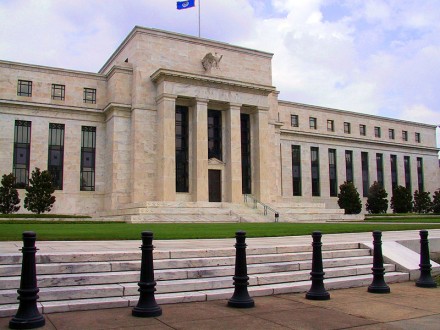
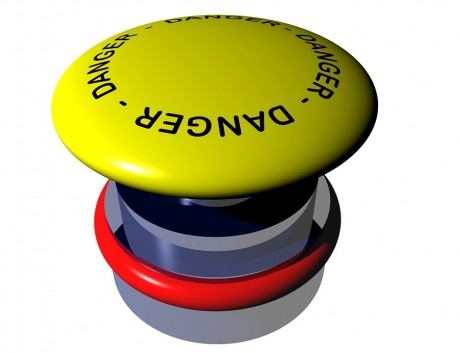 Are we about to witness one of the largest stock market crashes in U.S. history? Swiss investor Marc Faber is the publisher of the “Gloom, Boom & Doom Report”, and he has been a regular guest on CNBC for years. And even though U.S. stocks have been setting new record high after new record high in recent weeks, he is warning that a massive stock market crash is in our very near future. According to Faber, we could “easily” see the S&P 500 plunge all the way down to 1,100. As I sit here writing this article, the S&P 500 is sitting at 2,181.74, so that would be a drop of cataclysmic proportions. The following is an excerpt from a CNBC article that discussed the remarks that Faber made on their network on Monday…
Are we about to witness one of the largest stock market crashes in U.S. history? Swiss investor Marc Faber is the publisher of the “Gloom, Boom & Doom Report”, and he has been a regular guest on CNBC for years. And even though U.S. stocks have been setting new record high after new record high in recent weeks, he is warning that a massive stock market crash is in our very near future. According to Faber, we could “easily” see the S&P 500 plunge all the way down to 1,100. As I sit here writing this article, the S&P 500 is sitting at 2,181.74, so that would be a drop of cataclysmic proportions. The following is an excerpt from a CNBC article that discussed the remarks that Faber made on their network on Monday…
